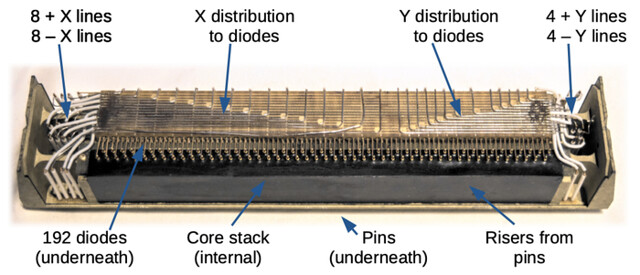Author Archives: Todd Hoff
Author Archives: Todd Hoff

This is a guest post by Benjamin Manes, who did engineery things for Google and is now doing engineery things as CTO of Vector.
The previous article described the caching algorithms used by Caffeine, in particular the eviction and concurrency models. Since then we’ve made improvements to the eviction algorithm and explored a new approach towards expiration.
Window TinyLFU (W-TinyLFU) splits the policy into three parts: an admission window, a frequency filter, and the main region. By using a compact popularity sketch, the historic frequencies are cheap to retain and lookup. This allows for quickly discarding new arrivals that are unlikely to be used again, guarding the main region from cache pollution. The admission window provides a small region for recency bursts to avoid consecutive misses when an item is building up its popularity.
This structure works surprisingly well for many important workloads like database, search, and analytics. These cases are frequency-biased where a small admission window is desirable to filter aggressively...
Wake up! It's HighScalability time:
Do you like this sort of Stuff? I'd greatly appreciate your support on Patreon. Know anyone who needs cloud? I wrote Explain the Cloud Like I'm 10 just for them. It has 39 mostly 5 star reviews. They'll learn a lot and love you forever.

Wake up! It's HighScalability time:

Opportunity crossed over the rainbow bridge after 15 years of loyal service. "Our beloved Opportunity remains silent."
Do you like this sort of Stuff? I'd greatly appreciate your support on Patreon. Know anyone who needs cloud? I wrote Explain the Cloud Like I'm 10 just for them. It has 39 mostly 5 star reviews. They'll learn a lot and love you forever.
Wake up! It's HighScalability time:
Do you like this sort of Stuff? I'd greatly appreciate your support on Patreon. Know anyone who needs cloud? I wrote Explain the Cloud Like I'm 10 just for them. It has 35 mostly 5 star reviews. They'll learn a lot and love you forever.


Wake up! It's HighScalability time:

Memory module for the Apollo Guidance Computer (Mike Stewart). The AGC weighed 70 pounds and had 2048 words of RAM in erasable core memory and 36,864 words of ROM in core rope memory. It flew to the moon.
Do you like this sort of Stuff? Please go to Patreon and do what comes natural. Need cloud? Stand under Explain the Cloud Like I'm 10 (35 nearly 5 star reviews).

This is a guest post from Ryan Averill at FraudGuard.io.
At FraudGuard.io we are a team of just a few developers; all working with our customers to try to make their applications as safe as possible. We have been working on FraudGuard for about 3 years and we’ve had paying customers for more than 2 years now. The main idea behind FraudGuard is for us to get attacked so you don’t have to. In other words; reduce the overall number of attacks your application receives each day by leveraging our threat data. We do this by by taking our attack data from our network of honeypots and share that data via API direct to you. Instead of some businesses just running services like Maxmind, that update occasionally, we actually run the entire process in house so we can immediately share real-time attack data from around the world....
Wake up! It's HighScalability time:
Do you like this sort of Stuff? Please go to Patreon and do what comes natural. Need cloud? Stand under Explain the Cloud Like I'm 10 (35 nearly 5 star reviews).
Sorry, Stuff The Internet Says On Scalability has been called on the account of wind, rain, power outages and general mayhem. We're all safe, but it's hard to write a post using stone knives and bear skins. See you next week.
Lots of rain fell over the last 48 hours, but how much? Here is a preliminary look. For a more detailed list go here: https://t.co/4FDJ80jb8q #cawx #AtmosphericRiver pic.twitter.com/DjCIH1E9fn
— NWS Bay Area (@NWSBayArea) January 17, 2019
Mudslide closes Hwy. 17 southbound in Santa Cruz Mountains https://t.co/dpSfZ6xrpC pic.twitter.com/k0JZMnOUs9
— SFGate (@SFGate) January 17, 2019
Residents along Hwy 35 in the Santa Cruz mountains say this storm has created major problems - lots of people stranded. The latest at 4 & 6pm. https://t.co/daqxt7VwUp #abc7now pic.twitter.com/YpCUyGoKYz
— David Louie (@abc7david) January 17, 2019
@RobMayeda : Santa Cruz Mountains are getting hammered. Rain rates of 2.13” per hour just now. 3.46” since midnight. pic.twitter.com/ACeqH8eZAe
— Ricardo Cortes (@RicardoDCortes) January 17, 2019
Wake up! It's HighScalability time:
The modern day inner sanctum revealed for all to experience. Nausea no extra charge.
Do you like this sort of Stuff? Please support me on Patreon. Need cloud? Consume Explain the Cloud Like I'm 10 (35 nearly 5 star reviews).

Wake up! It's HighScalability time:
Do you like this sort of Stuff? Please support me on Patreon. Need cloud? Explain the Cloud Like I'm 10 (34 almost 5 star reviews).
Wake up! It's HighScalability time:
Do you like this sort of Stuff? Please support me on Patreon. I'd really appreciate it. Still looking for that perfect xmas gift? What could be better than a book on the cloud? Explain the Cloud Like I'm 10. And if you know someone with hearing problems they might find Live CC useful.

pMD is a fast growing, highly rated health care technology company that has been recognized as a Best Place to Work by SF Business Times, Modern Healthcare, and Inc. Senior DevOps Engineer: Your engineering work will focus on using your deep knowledge of the web stack including firewalls, web applications, caches and data stores to create innovative infrastructure architectures that are resilient, scalable, and blazingly fast. You will bring best practices for automating the provisioning and patching of servers, replicating and versioning configuration changes, monitoring and alerting, deploying application and data store updates, and high availability / disaster recovery. Please apply here.
Wake up! It's HighScalability time:
We've come a long way in 50 years. Or have we?
Alan Kay: I believe ARPA spent $ 175,000 of 1968 money for that one demo. That’s probably like a million bucks today.
Bill English: What we did was lease two video circuits from the phone company. They set up a microwave link: two transmitters on the top of the building at SRI, receiver/ transmitters up on Skyline Boulevard on a truck, and two receivers at the Civic Center. Cables of course going down into the room at both ends. That was our video link. Going back we had two dedicated 1,200-baud lines: high-speed lines at the time. Homemade modems.
Doug Engelbart: It was the very first time the world had ever seen a mouse, seen outline processing, seen hypertext, seen mixed text and graphics, seen real-time videoconferencing.
Alan Kay: We could actually see that ideas could be organized in a different way, that they could be filtered in a different way, that what we were looking at was not something that was trying to automate current modes of thought, but that there should be an amplification relationship between us and this new technology.

Wake up! It's HighScalability time:
This is your 1500ms latency in real life situations - pic.twitter.com/guot8khIPX
— Ivo Mägi (@ivomagi) November 27, 2018
Do you like this sort of Stuff? Please support me on Patreon. I'd really appreciate it. Know anyone looking for a simple book explaining the cloud? Then please recommend my well reviewed (31 reviews on Amazon and 72 on Goodreads!) book: Explain the Cloud Like I'm 10. They'll love it and you'll be their hero forever. And if you know someone with hearing problems they might find Live CC very useful.

This article is written by Preetam Jinka, Senior Infrastructure Engineer at ShiftLeft. Originially published as Time Series at ShiftLeft.
Time series are a major component of the ShiftLeft runtime experience. This is true for many other products and organizations too, but each case involves different characteristics and requirements. This post describes the requirements that we have to work with, how we use TimescaleDB to store and retrieve time series data, and the tooling we’ve developed to manage our infrastructure.
We have two types of time series data: metrics and vulnerability events. Metrics represent application events, and a subset of those that involve security issues are vulnerability events. In both cases, these time series have some sort of ID, a timestamp, and a count. Vulnerability events can also have an event sample that contains detailed information about the request that exercised a security vulnerability. In addition to those attributes, time series are also keyed by an internal ID we call an SP ID, which essentially represents a customer project at a certain version...